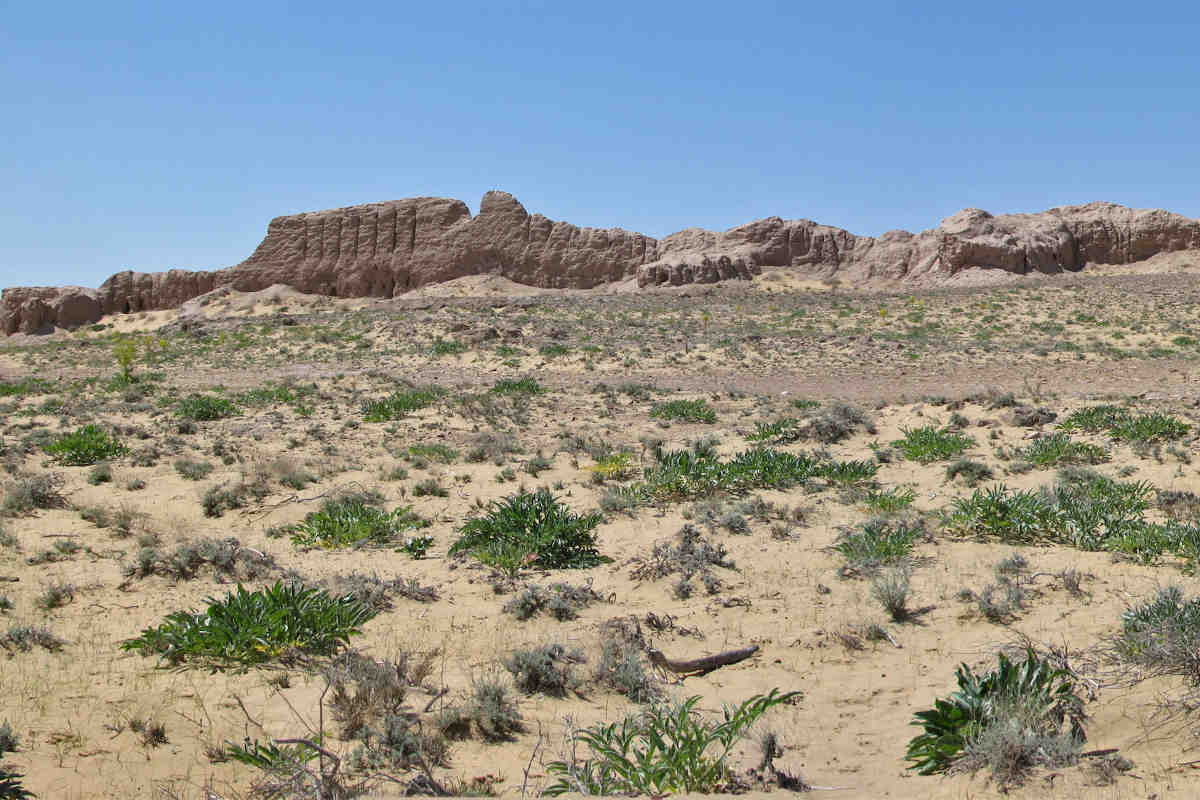Karakalpakstan - Fortress Ayaz Kala 3
Fortress Ayaz Kala 3 is located on a natural hill, lies in the southern part of the Ayazkol salt marsh and in the drainless part of the Pashahaykum sand, 20.1 kilometres north and slightly east of the settlement of Bustan, 19.4 km northeast of the settlement of Shark-Yulduzi, 18.8 km northwest of the settlement of Jambaskala and 41.9 km northeast of the town of Beruni in the Ellikala district of the Republic of Karakalpakstan.

The fortress of Ayaz Kala 3 was first explored in 1939-1940 by the Karakalpakstan and Khorezm archaeological expedition led by S.P. Tolstov. Three settlements stand out among the large group of sites. The first is Ayaz-kala Fortress No. 3, with minarets and labyrinths, surrounded by a thick wall. Inside the fortress are the remains of a spacious palace.
The archaeologist S.P. Tolstov, in his book “In the Footsteps of the Ancient Khorezmian Civilisation. Part 1.” (1948): “Folk legend associates this fortress with the name of a hero, a slave Ayaz, who won the hand of the princess who lived in the Kyrk-kyz fortress with her forty friends.
The image of the brave and wise slave giant Ayaz is one of the oldest images in Central Asian Turkic folklore. A Kazakh legend recorded in the Lower Syr Darya links this image to legendary events that foretold the formation of the Aral Sea, the disappearance of the Ustyurt Channel of the Amu Darya and the formation of ancient Khorezm.
According to this legend, there was no Aral Sea in earlier times, and the Syr Darya and Amu Darya rivers, which merged, flowed into the Caspian Sea through Lauzan, Kunya-Urgench and Aibugir. At the site of the Aral Sea lived the Adagy people, ruled by the cruel and treacherous Fasyl Khan, and on the territory along the Uzboys lived the Baysyn people, led by Ayaz Khan, a former slave, who had become the ruler of the state because of his wisdom and justice.
Due to the terrible crimes of Fasyl-khan, who dishonoured the daughter of a saint, the waters flooded the entire kingdom of Fasyl at his prayer. The Aral Sea was formed at this point and the two great rivers began to flow into it.
Their old bed dried up, and the people of Baisyn, led by Ayaz-khan, moved to Khorezm and founded the kingdom called Urgench. Adagiys and all its cities died under water, and even now, on clear days, traces of their buildings can be seen at the bottom of the Aral Sea…”.
We encounter the image of the slave Ayaz in the XVII century in “Genealogy of the Turkmen” by Abulgazi”. Laconical evidence of the existence of the image of Ayaz already in the XI century we find in the “Dictionary” of Mahmud Kashgari who writes: “Ayaz is the name of a slave”. Apparently, this is not a specific name for slaves in general, but a personal name of a slave that was well known to the Turks, the informants of this outstanding early medieval linguist.
The settlement of Ayaz-kala is a unique historical monument – the ruins of an ancient fortress from the Kushan period. The fortress was built in the III-II century BC during the heyday of the Kushan culture.
The fortress served as a military fortification and protected the borders of the kingdom. The site chosen for the construction of the fortress still amazes with its detailed elaboration. The building stands on a flat hilltop 60 metres high.
The double walls of the Ayaz Kala fortress, built of mud bricks, are aligned with the four cardinal directions. The outer wall, which has survived to the present day, is 10 metres high and about 2.5 metres thick.
The entrance to the fortress (south side) is protected by a labyrinth. The entrance has a special feature – it was built so that the south winds could blow dust and debris away from the fortress.
